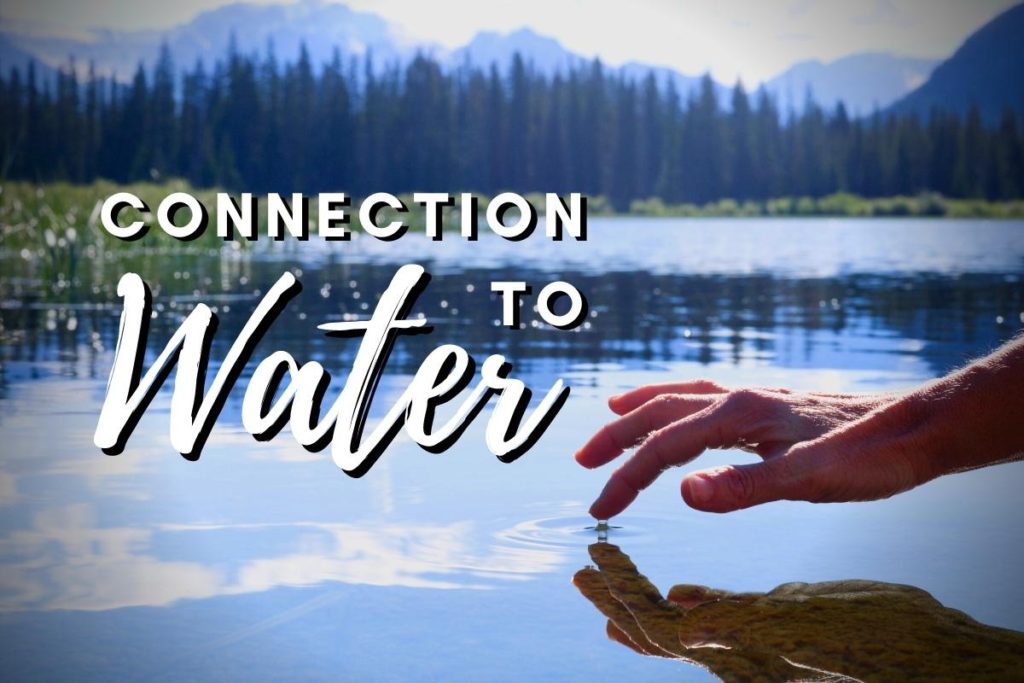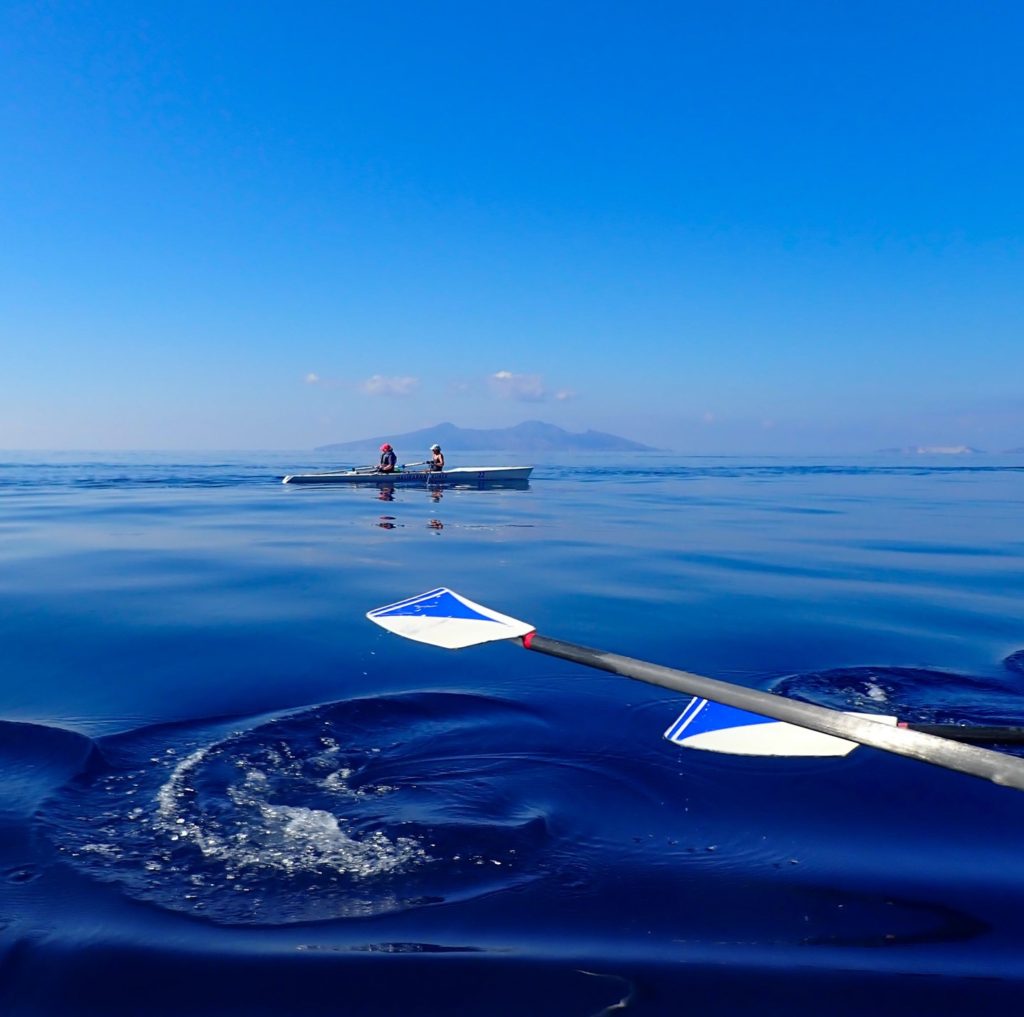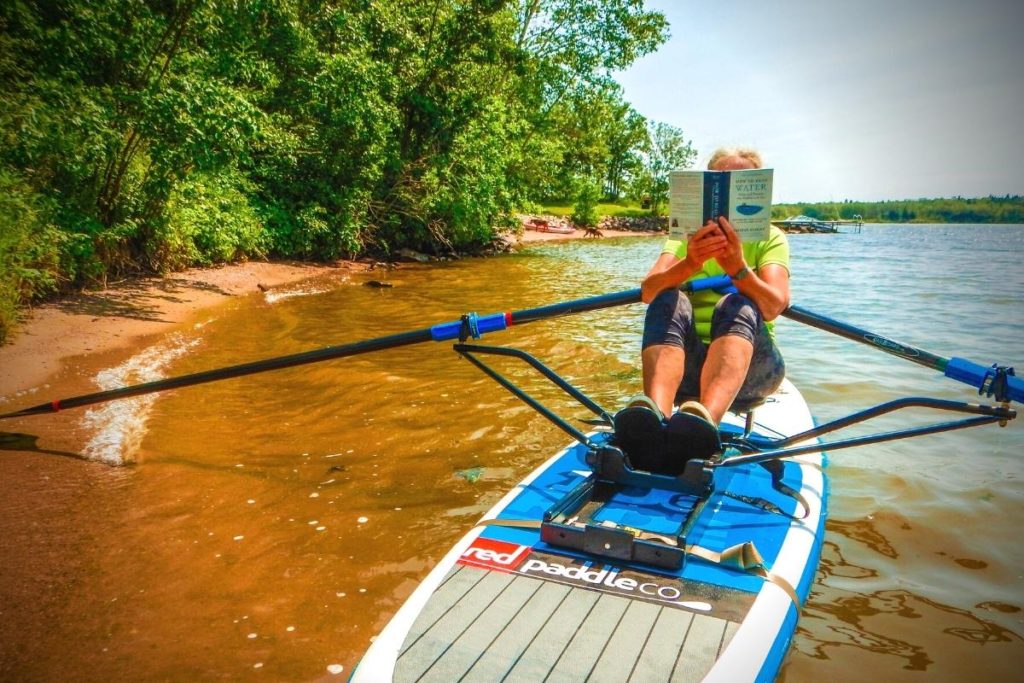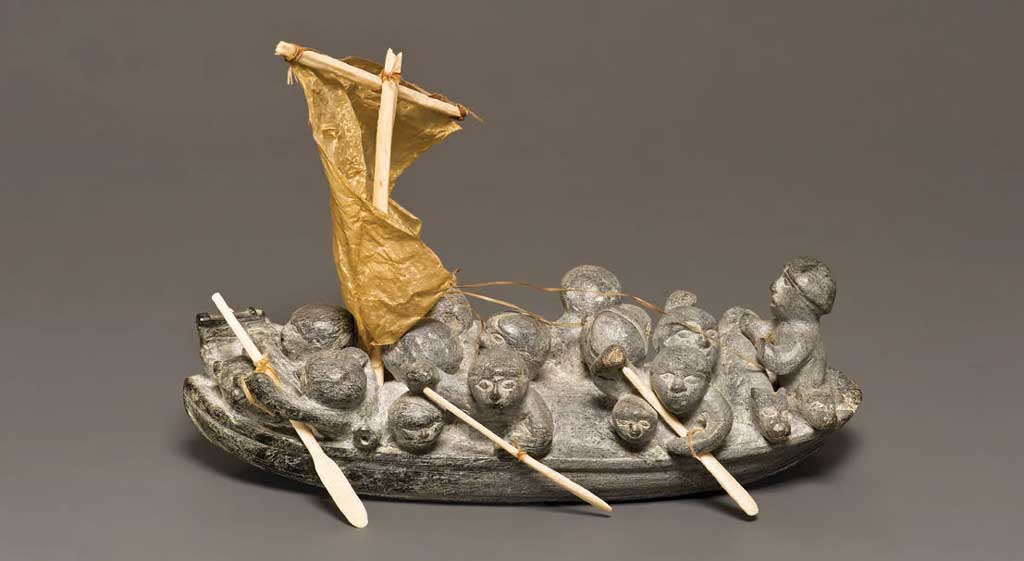
Connection to Water
Sangbreeta Moira begins her TedX Talk, Transform Your Presence, by talking about art. Paintings endure and continue to resonate long after their creators are gone because of how they make people feel. The art creates a connection. She made the same point in a keynote speech at a recent adventure travel conference that I attended virtually. Her talk was excellent, but my mind strayed to an art exhibition which got me thinking about my emotional connection to water. Which got me thinking about rowing’s connection to water.

Rowers’ connection to water
It is stating the blindingly obvious that rowers feel a connection to water. Although wait, with the rise of indoor rowing on machines, maybe this is not quite so true. On water rowers are passionate about their sport and usually about where they row. This passion comes from the years invested in learning balance, catch, release, power. It comes from the reward of a shell moving lightly and smoothly through the water, with the sound of the run (the boat “singing”) and perfect pools from the blades swirling away. It also stems from the beauty of being on the water in the early morning, under the midday sun or into the evening twilight. It is about sensing the calmness of a lake or the flow of a river or the swell of the sea.
MAIF, a French insurance company, has launched the Sport Planète initiative to better connect sport to the environment and raise public awareness through eco-adventure activities. Two French national champions participated in a 1200 km relay from Chamonix to Nice last month. Perhaps not unlike how water trails become paths to protecting rivers, which I have written about previously. I have also mused about the connection to water for rowers in terms of water quantity – either too much or too little. While we know that rowing is fabulous exercise and good for the mind and soul, perhaps we have not yet fully recognized that that this may in part be due to rowing being a water sport.

The connection to wellbeing and mental health
There really is something about being by or on water. It is not just the waters we know and love but every time we travel and see a new lake or river or stand by a sea or an ocean it makes us feel good. Running our first trips in 18 months in September and October had me by Austrian Lakes, along French rivers and sunning myself on the coast of Turkey. I sure felt good and it was not just the joy of travelling safely during a pandemic. It was also a manifestation of my emotional connection to water, which I also felt so strongly sitting on docks this summer by northern Canadian lakes.
This connection to water is obviously not unique to rowers. A popular google search is “why do I love being near water?” Many results refer to a book titled Blue Mind. While it seems to have garnered a short flurry of media interest when published, I can’t say that I am inspired to read the book, even if he does make a pitch for vacations involving water. Yup, I am all over that concept. I would rather spend time learning more about water. I had previously mused about our limited vocabulary of water, compared to land. Which reminds me, I would like to get back to a book that I started reading and have not finished How to Read Water. But I digress.
Interesting work has been done by BlueHealth, a pan-European project exploring the connection between urban “blue spaces” and health. Among other research, they conducted a systematic review of scientific literature which showed the link between being by water and improved well being and mental health. While all blue spaces generate happiness in those who live by them or spend even a short amount of time (15 minutes!) by them, apparently coastal areas are particularly positive places for this connection to water. Blue spaces are the new green spaces. This has been proven not just in research and the application of findings into urban design but also through the action of citizen groups involved in an array of activities ranging from advocacy to stewardship to self-help groups, such as Keep Calm and Paddle On, a group in western Canada that uses SUP paddling as therapy for people like firefighters dealing with the trauma they experience in their working lives. Perhaps breast cancer survivors are drawn to rowing and dragon boating groups not only because of the activity and wonderful support, but because it takes place on water?
Winter in Maine can feel a bit isolated at times. We turn to nature for a certain type of connection. … water connects us in ways that are sometimes obvious and sometimes harder to see. All of the water on the planet is connected and thus provides a common connection for people no matter where or how they live. … There is, however, another aspect of this connection – the emotional connection to water that all humans feel to one degree or another. It is something that we share, and it is so basic to our existence.
Regarding a recent discussion group in Maine called “We Stand by the Sea”.

Naadohbii: To Draw Water
Which brings us back to art. Before leaving for Europe in the late summer, I finally had a chance to visit Qaumajuq, recently opened here in Winnipeg. It houses the world’s largest public collection of contemporary Inuit art, housed in a spectacular building attached to the Winnipeg Art Gallery (WAG), which is a beautiful building in its own right. Qaumajuq tipped Time magazine to list Winnipeg as one of the world’s 100 greatest places to visit in 2021. After exploring Quamajuq’s superb exhibits, I wandered over to WAG. Where I discovered Naadohbii: To Draw Water. The exhibition is important as the first Winnipeg Indigenous Triennial with artists from Canada, Australia and New Zealand. Someone who loves puns has dubbed it a watershed moment.
Walking into that exhibit, I felt a visceral excitement. Water! The exhibition explores Indigenous connection to water. Definitely not in the tradition of Sunrise on the Saguenay, Cape Trinity. The 20 artworks are in a variety of media. Some are stunning and I immediately loved them. Others are more difficult to connect to. Some interested me but did not attract me aesthetically. A few I simply did not get or like at any level. But it was a short visit and I will return before the exhibition closes in February. Having researched this post, I want to bring the new perspectives that I now have about our connections to water.
I will especially want to relook at one of the centrepiece works by Rebecca Belmore titled Body of Water. It is an arresting sculpture, even more so as I read about its political roots. What caught my eye now, is that the work was commissioned by the 16th Istanbul Biennial. I was just in Istanbul, rowing on the Golden Horn and the Sea of Marmara for our rowing tour. I am not sure if this connection fits the blue space discussion, but for me it weaves together elements which are all important to my wellbeing and who I am. Wonderful connections.